Terri, a Princeton resident since 1988, has been gradually converting her yard to native plants instead of grass or non-native plants since retiring 5 years ago. Terri’s approach has been incremental, as she does not have a large budget, but her aim is to create an insect and bird-friendly environment in her yard.

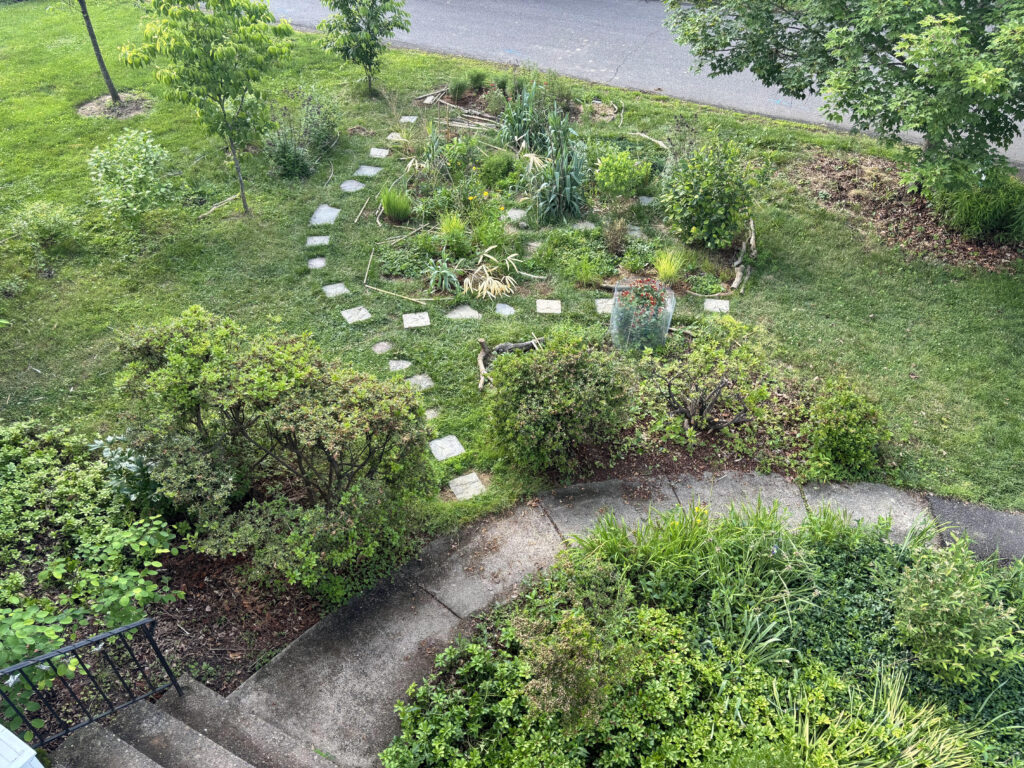
How it started
The front yard initially featured only a few native plants, including witch hazel and buttonbush. Terri reflected on her process, “It took me a while to figure out what to do.” The yard was originally all grass, so Terri started in the center of the yard and installed a path, which gave plants room to spread out and also left space for new plants to grow.
Terri’s trial-and-error approach has seen several plants come and go, watching what survives and thrives based on conditions in her yard has informed her plant selection. Terri said she’s grown very little from seed since rabbits make that a “guaranteed disaster”. Many of the plants currently growing in Terri’s yard are known as “volunteer plants,” meaning seedlings that appear without being intentionally planted, often from seeds dropped by previous crops or carried by animals. Terri indicated several places in her garden where she didn’t plant anything, but many native plants have appeared. Terri uses the app PictureThis to identify native plants in her yard and moves them around her yard as necessary.
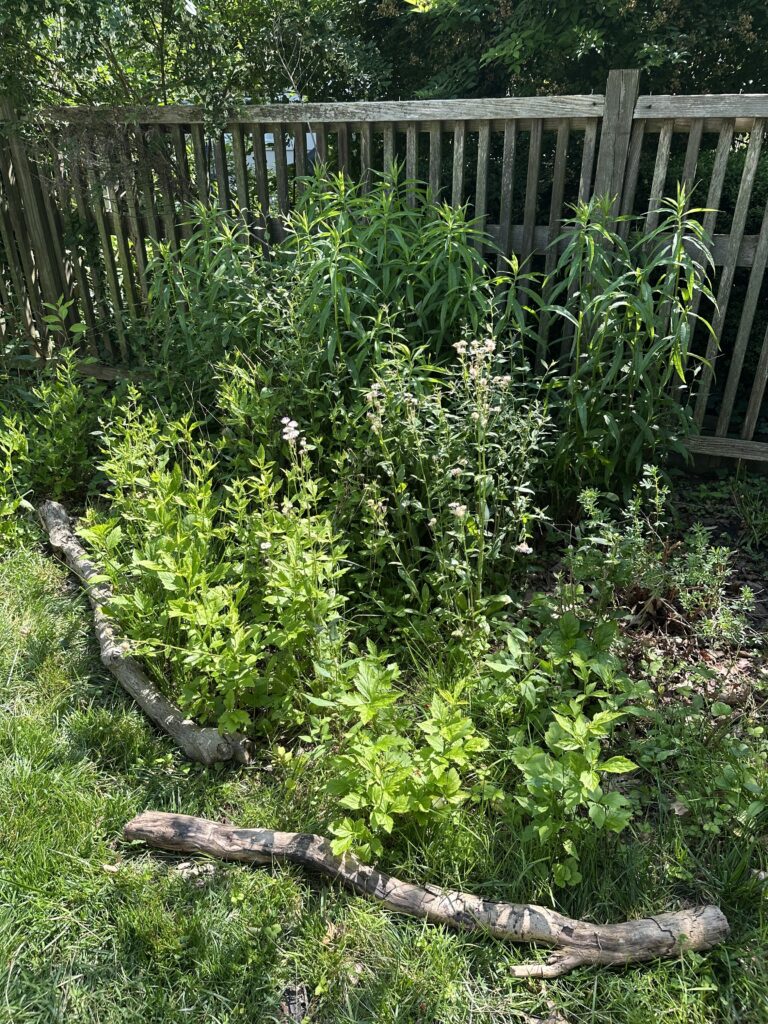
When deciding what to plant, Terri first assesses the spot where she wants the plant to grow. She frequents Gino’s Nursery and works with the staff there, showing photos of her yard and asking which plants would work best in that area based on the amount of sun and type of soil. If those plants succeed, she then goes to buy another one because she says, “plants are happier if they’re not alone”. Just a few examples of these successfully paired plants are her bee balm, goldenrod, and asters. Terri says “everything is for the birds, I don’t grow anything for me”. Her gardening is propelled by her love of birds and understanding of the need for natural spaces for pollinators.
In addition to native plants, Terri’s yard features a rain barrel and compost bin, as well as two brush piles. She also has a water source for birds. Whatever grass is left is mowed with a human-powered mower.
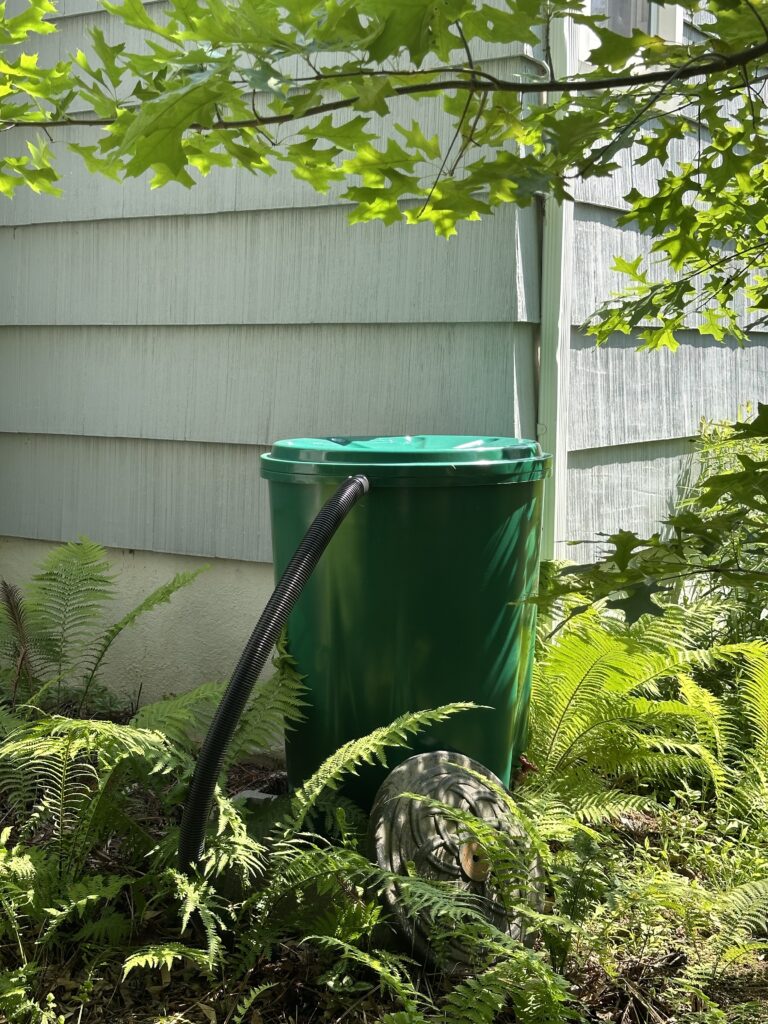
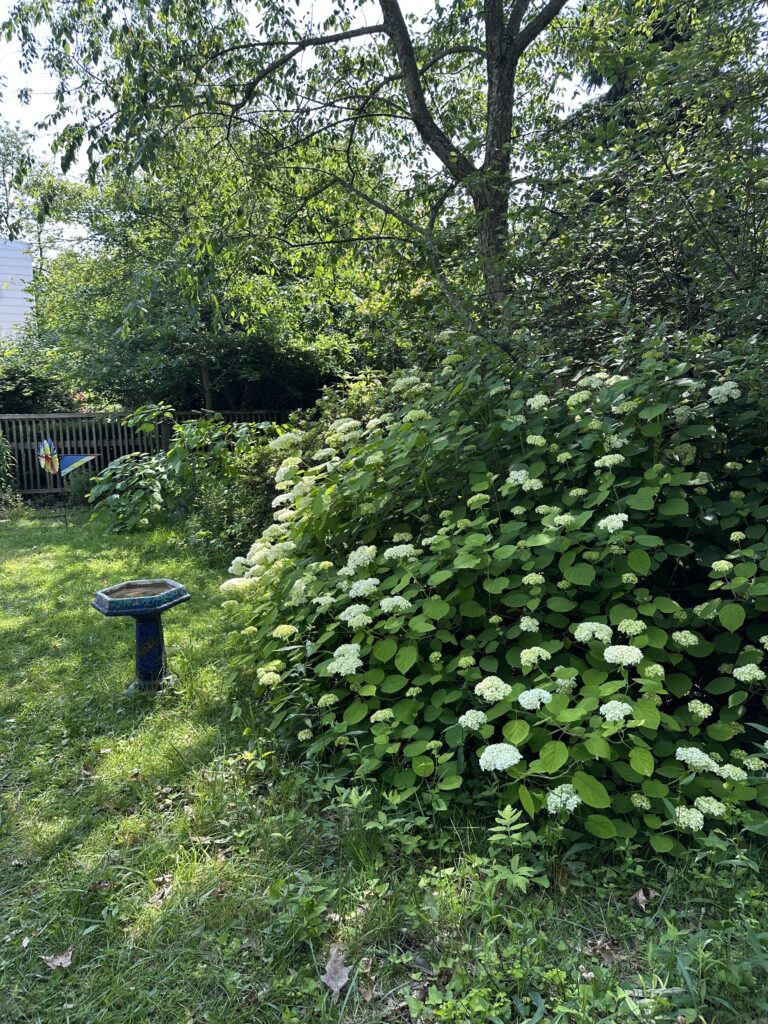
Invasive plant removal
Removing invasive plants has been an ongoing process. Terri said it took over a year and a half to completely remove the Forsythia, a pretty but “ecologically useless” invasive plant. Terri said they dug most of it out themselves but had to hire someone for a few hours to do the hardest part. This gradual process also includes the removal of the English Ivy and Ground Ivy, which Terri said have been difficult to eradicate completely. “Unless you have a ton of money to remove invasives, you can’t be a purist about it,” she said.
Current projects
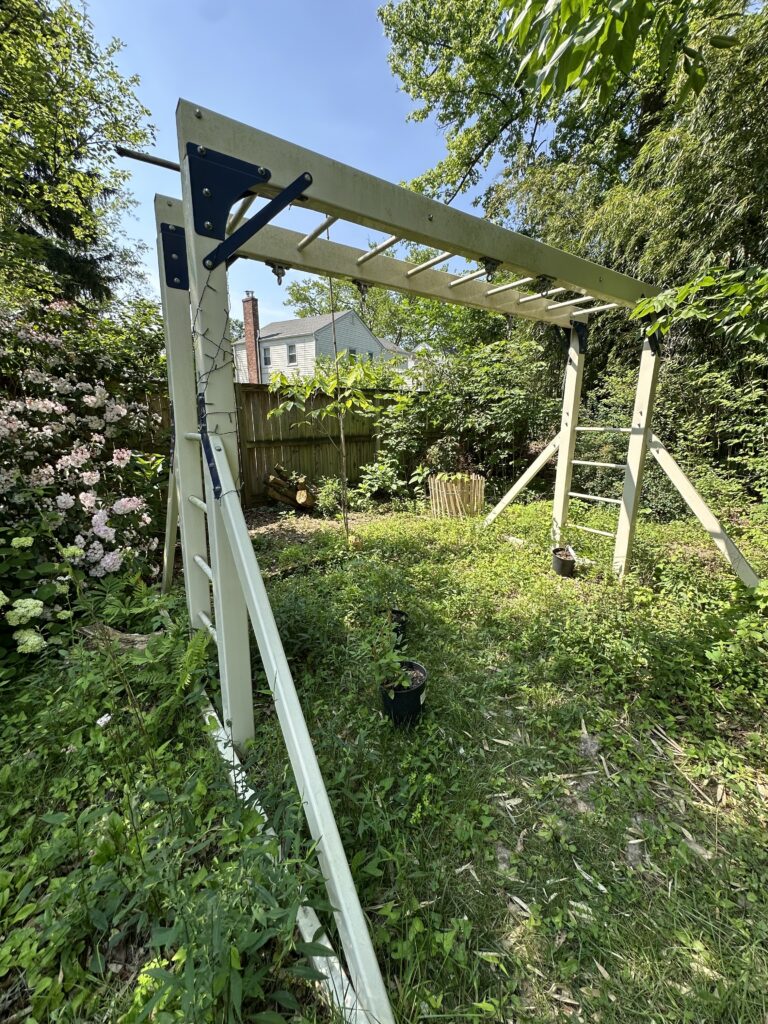
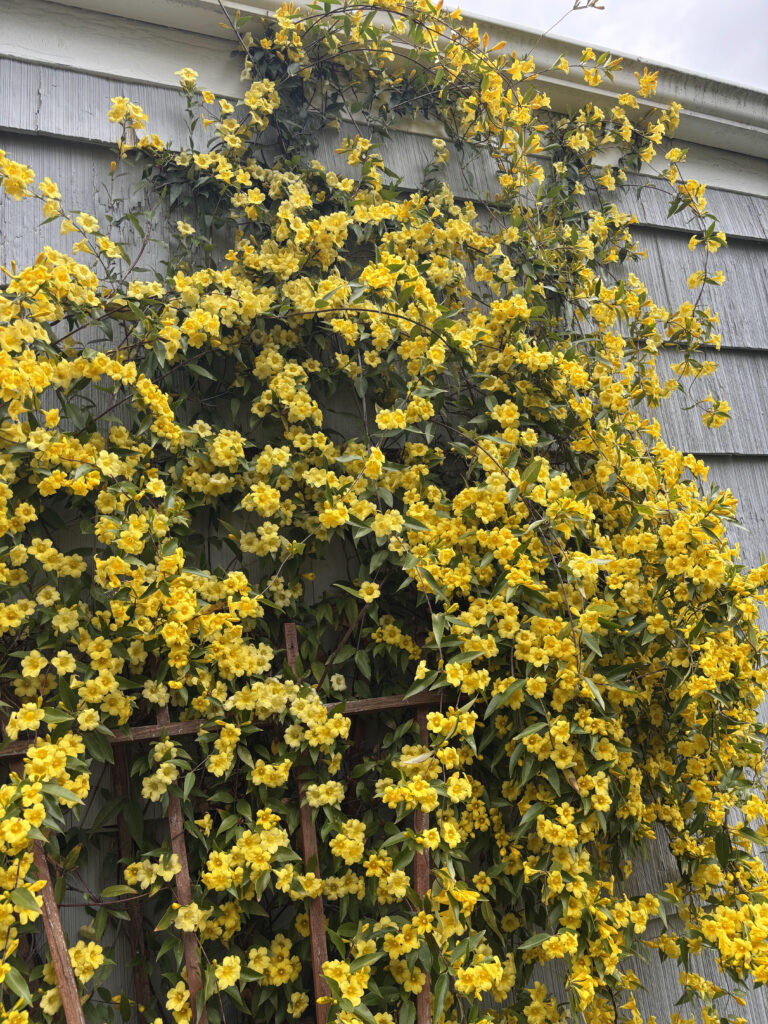
Terri has plans to plant American Wisteria to climb up the old jungle gym in the backyard. The Carolina Jessamine climbing up the back of the garage started from a pot.
In the front yard, Terri originally used branches from an Olive tree to create garden borders, but is now using bamboo, as there is a surplus of this invasive plant between her and her neighbor’s yard.
Challenges with deer
Terri has found that deer won’t eat Coreopsis (Tickseed) or Achillea millefolium (Yarrow), and especially avoid Eryngium yuccifolium (Rattlesnake master), which have prickly leaves. However, every year is different with the deer. Last year they destroyed Terri’s Rudbeckia triloba (Brown-eyed Susan), but this year they haven’t.
Success stories
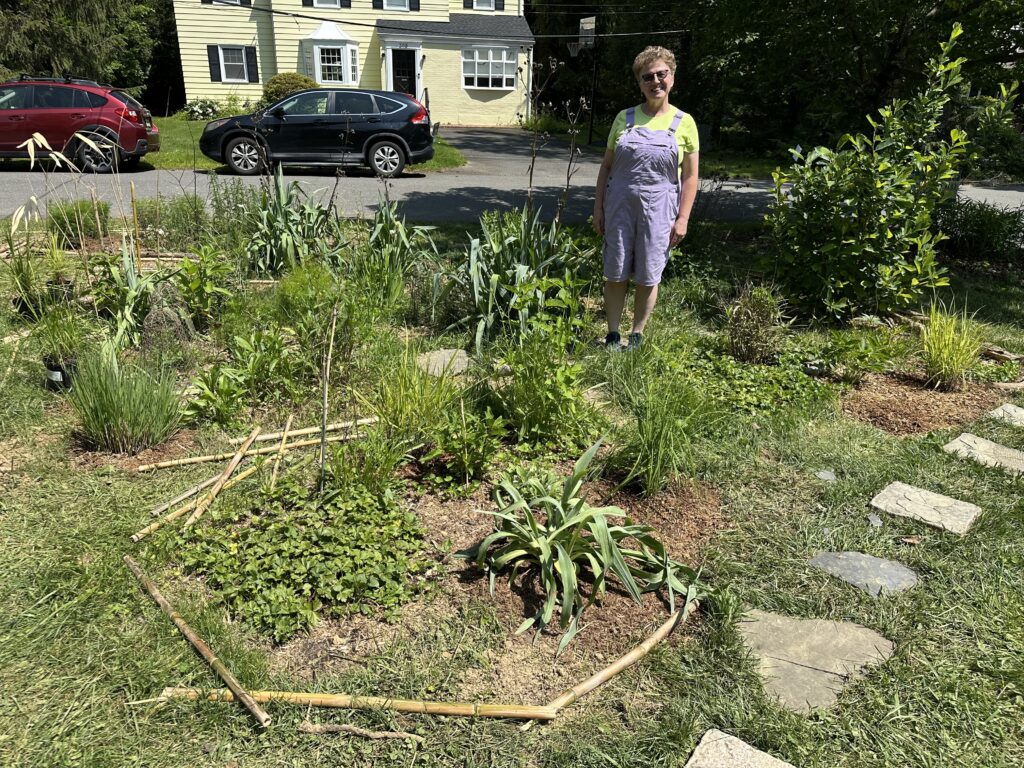
Terri shared a few recent success stories. Her paw paw and redbud trees bloomed for the first time this year. And her milkweed was also a success this year. Terri warns that you should be prepared for things to die. When that happens, her mentality is “Oh well, moving on!” It’s clear that challenges have not stopped Terri from cultivating her native garden.
One of Terri’s garden beds borders with her neighbors and she said they appreciate what she has been doing in her yard. Other neighbors stop by to ask her questions about the native plants growing.
Advice for those looking to shift to a native garden
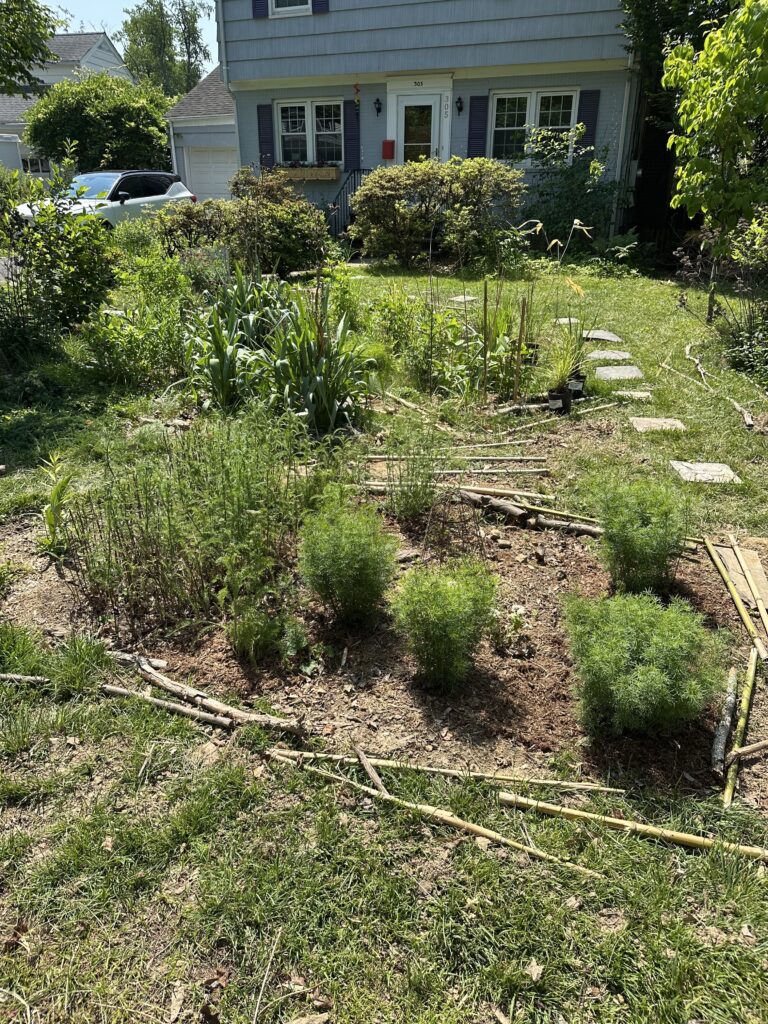
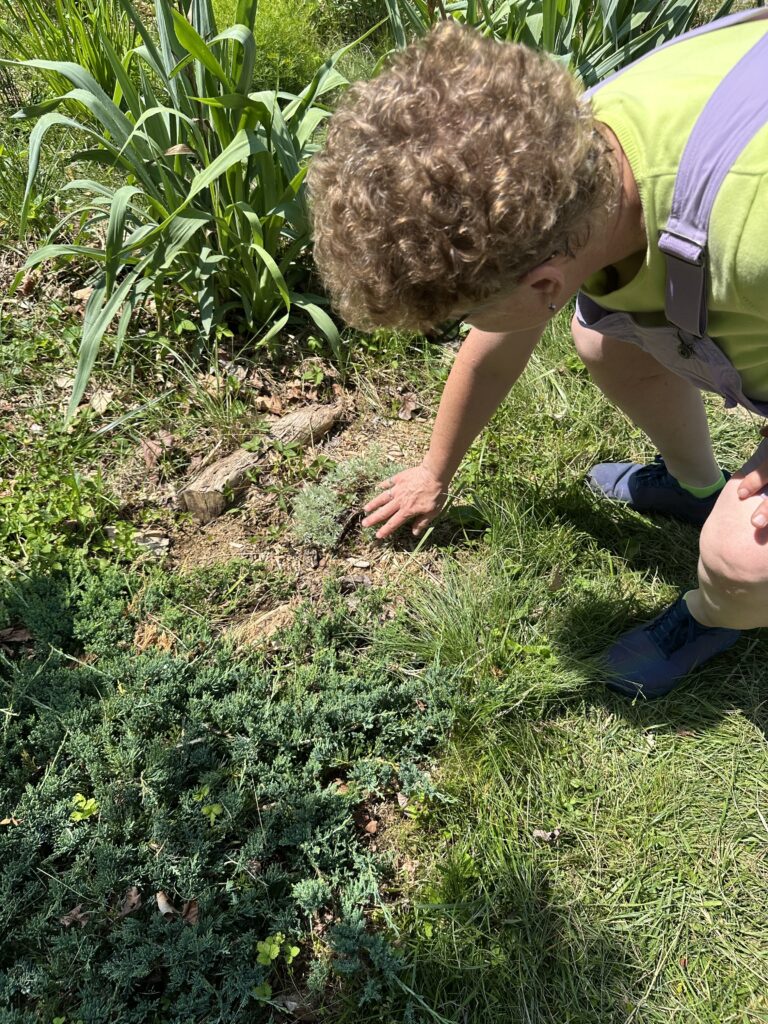
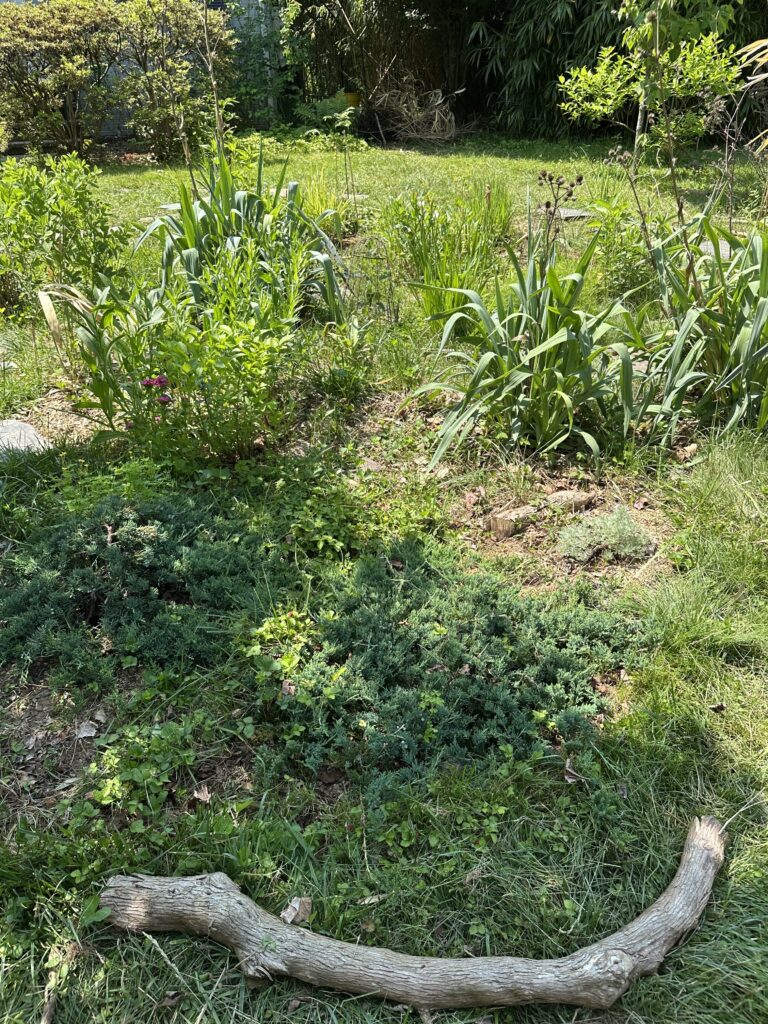
“There are two ways to go about it: make a big plot plan and fill entire beds…” or Terri says, “I didn’t have the money to do that, and instead approached it one plant at a time.” To save money, Terri recommends setting a budget for each year, and purchasing smaller (less expensive) plants rather than fully grown plants.
Terri also challenges fellow gardeners to “change your idea of what’s pretty”. Growing up in a neighborhood of really old Victorian era houses, Terri explains that in that era, plants from Asia were considered beautiful, and so most properties embraced those type of plants. “I never saw anyone treat an aster as anything but a weed,” Terri said.
Terri’s goal to create habitat for birds and pollinators has been a successful endeavor. She shared how on even her 1/10 acre of property, she’s seen an incredible variety of birds and pollinators – “once you start paying attention”. Even during the brief 30 minutes spent during the interview, we spotted a few cardinals and butterflies, and heard many birds singing.
Do you incorporate sustainable landscaping practices into your garden? Large or small we’d love to feature you! Reach out to us at info@sustainableprinceton.org



